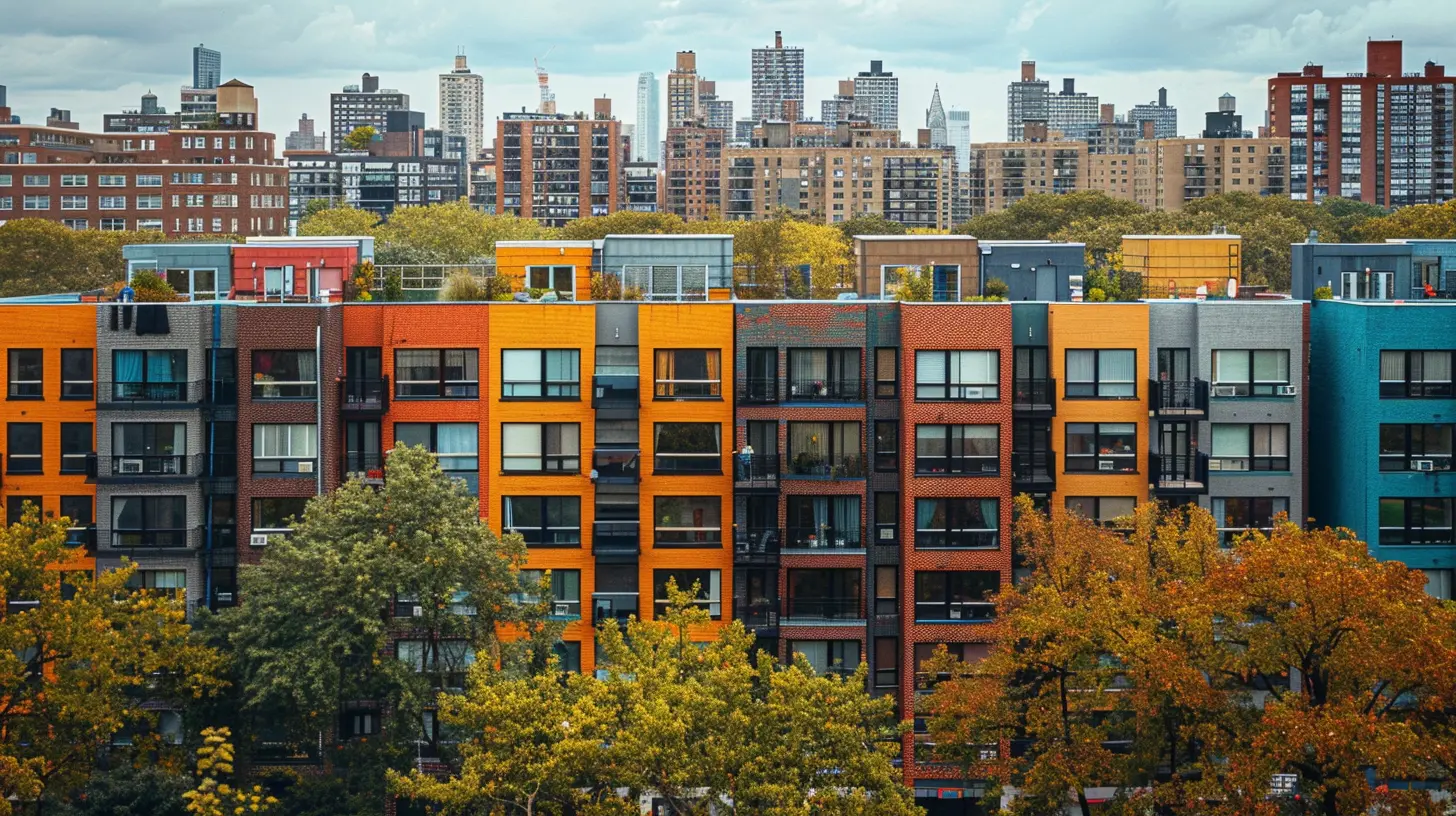The Role of Inclusionary Zoning in Expanding Affordable Housing
16 November 2025
In the grand symphony of city life, housing is the melody that binds us together. Yet, for many, finding an affordable place to call home feels like chasing the wind—always just out of reach. Skyrocketing rent, gentrification, and limited housing supply have turned homeownership into a distant dream for countless families. Amid this struggle, one policy has emerged as a beacon of hope: inclusionary zoning.
But what exactly is inclusionary zoning, and how does it play a role in expanding affordable housing? Let’s break it down and uncover its true impact on our communities. 
What Is Inclusionary Zoning?
At its core, inclusionary zoning (IZ) is a set of policies that require or encourage real estate developers to include a percentage of affordable housing units within new residential projects. Think of it as a recipe where affordability is a key ingredient—no development is complete without it.Unlike traditional affordable housing programs that rely on government funding, inclusionary zoning shifts part of the responsibility to private developers. This ensures that economic diversity is built into the very fabric of our neighborhoods.
But how does it work in reality? Let's dig deeper. 
How Inclusionary Zoning Works
The beauty of inclusionary zoning is in its flexibility. While every city has its own variation, the general idea remains the same: when developers build new housing, they must set aside a portion of units as affordable.Types of Inclusionary Zoning Policies
1. Mandatory Inclusionary Zoning – Developers are legally required to include affordable units in their projects. Non-compliance isn't an option.2. Voluntary Inclusionary Zoning – Developers are incentivized (often through tax breaks or zoning bonuses) to incorporate affordable housing, but it’s not a strict requirement.
To offset potential losses and keep construction moving forward, cities may offer benefits such as:
- Density bonuses (allowing more units per project)
- Tax incentives and fee reductions
- Fast-tracked permitting processes
This ensures that developers remain engaged while also contributing to a more inclusive housing market. 
Why Inclusionary Zoning Matters
Affordable housing isn’t just about giving people a place to sleep—it’s about building strong, diverse communities. Without affordability, cities risk becoming playgrounds for the wealthy while pushing out middle- and low-income residents.Fighting Housing Inequality
Picture a city as a puzzle. Each piece—teachers, nurses, retail workers, young professionals—fits together to create a whole. Without inclusionary zoning, some pieces get tossed away, creating gaps that weaken the entire structure.When low-income families can live near job centers, schools, and transportation hubs, they gain the opportunity to thrive. Inclusionary zoning helps bridge the gap, ensuring that essential workers don’t have to travel miles just to clock in at work.
Reducing Gentrification’s Grip
Gentrification often sweeps through cities like a tidal wave, replacing long-standing communities with luxury apartments and high-end shops. Inclusionary zoning acts as a breakwater, ensuring that at least some housing remains within reach for long-time residents.Think of it as reserving front-row seats at a concert—not just for those who can pay the highest price, but for everyone who deserves a chance to experience it. 
The Benefits of Inclusionary Zoning
So, what makes inclusionary zoning such a powerful tool for expanding affordable housing? Here are a few key advantages:1. Encourages Mixed-Income Communities
Inclusionary zoning fosters neighborhoods where people of different income levels live side by side. This diversity strengthens social ties, improves economic mobility, and reduces societal segregation.2. Reduces Housing Disparities
By integrating affordable units into market-rate developments, IZ helps distribute low-income housing across a city rather than concentrating it in certain areas. This prevents the creation of poverty-stricken pockets while promoting equity.3. Limits Dependency on Government-Funded Housing
Traditional affordable housing relies heavily on public funding, which often falls short of demand. Inclusionary zoning shifts some of that burden to private developers, ensuring a more consistent housing supply.4. Helps Maintain Workforce Stability
Cities need teachers, nurses, firefighters, and service workers—but if these individuals can’t afford to live nearby, it creates long commutes and workforce shortages. Inclusionary zoning keeps these vital workers within reach of their jobs.5. Sustainable Urban Growth
As cities grow, they must do so efficiently. Inclusionary zoning promotes smart development by integrating affordability into urban expansion instead of pushing lower-income residents further away.Challenges and Criticisms of Inclusionary Zoning
No policy is perfect, and inclusionary zoning has its fair share of critics. Some argue that it places an unfair burden on developers, potentially leading to higher housing costs. Others worry about the effectiveness of voluntary IZ policies.Potential Drawbacks
- Increased Housing Costs – Some believe that requiring affordable units forces developers to raise prices on market-rate housing to compensate for lost revenue.- Limited Impact in Low-Demand Areas – In struggling real estate markets, developers may not see enough financial benefit to participate in voluntary IZ programs.
- Resistance From Developers – Some developers may choose to build in areas without IZ policies, reducing housing supply in cities with strict requirements.
However, well-designed inclusionary zoning policies can minimize these drawbacks while maintaining affordability goals.
Success Stories: Cities Leading the Way
Despite challenges, many cities have successfully implemented inclusionary zoning with positive results.New York City, NY
With its Mandatory Inclusionary Housing (MIH) program, NYC requires developers to set aside a percentage of affordable housing in rezoned areas. This policy has helped create thousands of affordable units while encouraging continued development.San Francisco, CA
San Francisco’s inclusionary housing program offers developers various options, including on-site affordable units, off-site development, or contributions to the city’s housing fund. This flexibility allows developers to participate in ways that make financial sense while still contributing to affordability.Montgomery County, MD
As one of the earliest adopters of inclusionary zoning, Montgomery County has provided over 15,000 affordable housing units since the 1970s. This long-term success showcases the lasting impact IZ can have when structured effectively.The Future of Inclusionary Zoning
As cities continue to evolve, so must their housing policies. Inclusionary zoning isn’t a one-size-fits-all solution, but it’s a crucial tool in the fight for affordability.What Can Be Improved?
- Refining financial incentives to encourage greater developer participation- Expanding IZ programs beyond just large metropolitan areas
- Combining IZ with other affordable housing initiatives for a more comprehensive approach
The road ahead won’t be easy, but with smart policies and community support, inclusionary zoning can continue playing a pivotal role in shaping fair and accessible housing markets.
Final Thoughts
Affordable housing is more than a policy debate—it’s a human necessity. Inclusionary zoning, when implemented thoughtfully, has the potential to transform cities into places where everyone, regardless of income, has a shot at a decent home.The question isn’t whether inclusionary zoning works, but how we can make it work even better. Housing should never be a luxury—it should be a right, woven into the fabric of every thriving city.
all images in this post were generated using AI tools
Category:
Affordable HousingAuthor:

Vincent Clayton

